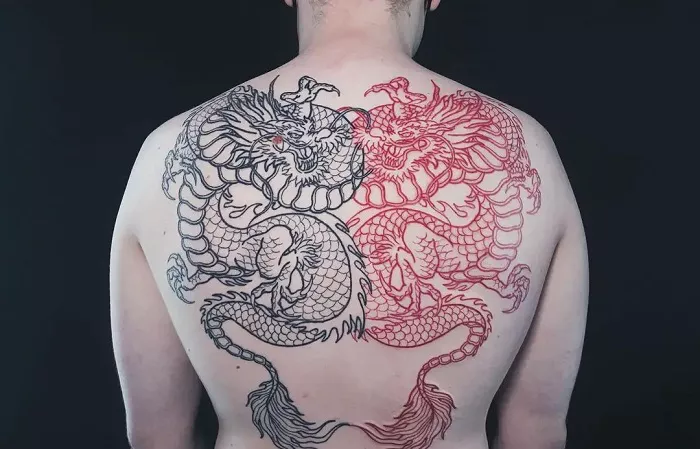Tattoos have evolved from ancient forms of body art into a globally celebrated means of personal expression. Among the numerous tattoo placement options, the upper back remains one of the most popular choices. It offers a broad canvas for elaborate designs, from intricate mandalas to sprawling floral patterns. However, a common concern for many individuals considering this placement is pain. How painful are upper back tattoos? This question is crucial for anyone embarking on their tattoo journey, especially as pain tolerance varies widely from person to person.
This article delves into the factors influencing the pain of upper back tattoos, including anatomical features, individual sensitivity, the tattooing process, and strategies to manage discomfort. By understanding these elements, individuals can make informed decisions and prepare adequately for their tattoo experience.
Understanding the Pain of Upper Back Tattoos
The pain experienced during a tattoo largely depends on the body’s anatomy and nerve distribution. The upper back, a relatively flat and muscular area, is often perceived as less painful compared to other locations like ribs, feet, or inner arms. However, nuances exist within this generalization.
Here are four key arguments to assess the pain of upper back tattoos:
Anatomy of the Upper Back: Bones, Muscles, and Nerves
The upper back encompasses areas rich in muscles, such as the trapezius and rhomboids, which provide a cushioning effect during tattooing. This muscular layer generally makes the upper back a more comfortable area to tattoo compared to bony regions like the ribs or elbows.
However, certain areas of the upper back are more prone to discomfort:
Spinal Column: The spine runs vertically through the center of the back. Tattooing over the vertebrae can be significantly more painful due to the minimal fat or muscle cushioning in this area. The thin layer of skin over the bone amplifies vibrations from the tattoo machine, leading to heightened sensitivity.
Shoulder Blades: While covered by muscle, the shoulder blades are bony regions. The vibrations from the tattoo needle can feel more intense here.
Nerve Proximity: The upper back houses nerves like the dorsal scapular nerve, which may increase sensitivity if the tattoo artist works near these areas.
Individual Pain Tolerance and Psychological Factors
Pain perception is highly subjective, influenced by both physical and psychological factors. Some individuals have higher pain thresholds and may describe the sensation as tolerable, while others with lower thresholds might find the experience challenging.
Pain Threshold Variations: Genetics, stress levels, and previous experiences with pain can affect how a person perceives tattoo pain.
Mental Preparation: Anxiety about the tattooing process can heighten pain sensitivity. Conversely, a calm and positive mindset may help reduce discomfort.
Skin Sensitivity: People with sensitive skin may experience more irritation during the process, especially if the skin is prone to redness or inflammation.
Tattoo Design and Technique: Impact on Pain
The type of design and the tattooing technique employed can significantly influence the pain experienced.
Linework vs. Shading: Fine lines and intricate details require precise needlework, which can be uncomfortable, especially over sensitive areas like the spine or shoulder blades. On the other hand, shading and color-filling involve broader strokes, which might cause a more prolonged, duller pain.
Size of the Tattoo: Larger tattoos covering the entire upper back necessitate longer sessions, increasing the likelihood of fatigue and pain as the skin becomes irritated over time.
Tattoo Artist’s Technique: Experienced artists often work more efficiently, minimizing the time spent on the tattoo and reducing overall discomfort. Conversely, less skilled artists might cause additional pain due to inconsistent pressure or slower progress.
Pain Management Strategies for Upper Back Tattoos
Preparing for an upper back tattoo involves more than selecting a design. Pain management is a critical component of the experience.
Pre-Tattoo Preparation: Adequate sleep, hydration, and a balanced meal before the session can improve overall resilience. Avoiding alcohol or caffeine, which can thin the blood, is also advisable.
During the Session: Distraction techniques such as listening to music, engaging in conversation, or focusing on breathing can help manage pain. Numbing creams or sprays, applied with the artist’s approval, may also provide temporary relief.
Aftercare: Proper aftercare reduces the risk of complications like infection, which can exacerbate discomfort. This includes cleaning the tattoo as instructed, applying soothing ointments, and avoiding sun exposure during the healing process.
Factors that Might Increase Pain for Upper Back Tattoos
While the upper back is generally less painful than other areas, specific factors can heighten the sensation:
Tattoo Placement: Designs extending onto the neck or wrapping around the shoulders can encounter more sensitive skin.
Existing Conditions: Individuals with conditions like fibromyalgia or chronic back pain may experience heightened sensitivity in the area.
Duration of the Session: Extended sessions without breaks can lead to increased fatigue and pain.
Tattoo Location Variations: Designs located closer to the armpits or near the base of the neck may cause discomfort due to thinner skin and higher nerve density.
Conclusion
Upper back tattoos are a versatile and popular choice for many individuals, offering a broad canvas for creative designs and a relatively manageable level of pain compared to other body parts. However, pain perception is subjective, influenced by anatomical, psychological, and procedural factors. While areas like the spine and shoulder blades may elicit more discomfort, the overall experience is often tolerable for most individuals with proper preparation.
Understanding these variables and employing effective pain management strategies can make the tattooing process more comfortable. Whether you’re considering your first tattoo or adding to an existing collection, the key to a positive experience lies in preparation, communication with your artist, and a commitment to aftercare. Ultimately, the beauty of the artwork often outweighs the temporary discomfort, leaving a lasting piece of self-expression to cherish.
Related topics:

